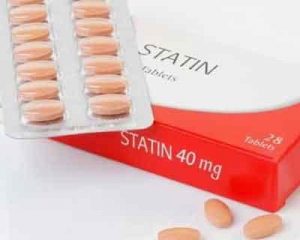- Home
- Editorial
- News
- Practice Guidelines
- Anesthesiology Guidelines
- Cancer Guidelines
- Cardiac Sciences Guidelines
- Critical Care Guidelines
- Dentistry Guidelines
- Dermatology Guidelines
- Diabetes and Endo Guidelines
- Diagnostics Guidelines
- ENT Guidelines
- Featured Practice Guidelines
- Gastroenterology Guidelines
- Geriatrics Guidelines
- Medicine Guidelines
- Nephrology Guidelines
- Neurosciences Guidelines
- Obs and Gynae Guidelines
- Ophthalmology Guidelines
- Orthopaedics Guidelines
- Paediatrics Guidelines
- Psychiatry Guidelines
- Pulmonology Guidelines
- Radiology Guidelines
- Surgery Guidelines
- Urology Guidelines
Adding Ezetimibe to Simvastatin enhances CVD risk reduction in high risk diabetes patients

Addition of Ezetimibe to simvastatin (a drug of statin family) may enhance the reduction in cardiovascular disease (CVD) risks in diabetes patients in comparison to CVD patients who are nondiabetic, revealed a study presented at the third annual Heart in Diabetes conference. The study was a sub-analysis of IMPROVE-IT ((Improved Reduction of Outcomes: Vytorin Efficacy International Trial)) trial which revealed that this effect persists in diabetic patients.
In IMPROVE-IT (Improved Reduction of Outcomes: Vytorin Efficacy International Trial), 18 144 patients after acute coronary syndrome (ACS) with low-density lipoprotein cholesterol 50 to 125 mg/dL were randomized to 40 mg ezetimibe/simvastatin (E/S) or 40 mg placebo/simvastatin. The primary composite endpoint was cardiovascular death, major coronary events, and stroke. DM was a prespecified subgroup.
Key findings
- The 4933 patients with DM were more often older and female had had a prior myocardial infarction and revascularization and presented more frequently with non-ST segment elevation acute coronary syndrome compared with patients without DM.
- The median admission low-density lipoprotein cholesterol was lower among patients with DM.
- E/S achieved a significantly lower median time-weighted average low-density lipoprotein cholesterol compared with placebo/simvastatin, irrespective of DM.
- In patients with DM, E/S reduced the 7-year Kaplan-Meier primary endpoint event rate by 5.5% absolute; in patients without DM, the absolute difference was 0.7%.
- The largest relative reductions in patients with DM were in myocardial infarction and ischemic stroke. No differences in safety outcomes by treatment were present regardless of DM.
- When stratified further by age, patients ≥75 years of age had a 20% relative reduction in the primary endpoint regardless of DM, whereas patients <75 years of age with DM had a greater benefit than those without.
- When stratified by the TIMI (Thrombolysis in Myocardial Infarction) Risk Score for Secondary Prevention, all patients with DM demonstrated benefit with E/S regardless of risk.
- In contrast, among patients without DM, those with a high risk score experienced a significant relative reduction in the composite of cardiovascular death, myocardial infarction, and ischemic stroke with E/S compared with placebo/simvastatin, whereas patients without DM at low or moderate risk demonstrated no benefit with the addition of ezetimibe to simvastatin.
To conclude the study the authors wrote: "In IMPROVE-IT, the benefit of adding ezetimibe to statin was enhanced in patients with DM and in high-risk patients without DM."
For further reference, click on the link

Disclaimer: This site is primarily intended for healthcare professionals. Any content/information on this website does not replace the advice of medical and/or health professionals and should not be construed as medical/diagnostic advice/endorsement or prescription. Use of this site is subject to our terms of use, privacy policy, advertisement policy. © 2020 Minerva Medical Treatment Pvt Ltd